Case Studies.
Add Case Study
Our Case Study database tracks 18,927 case studies in the global enterprise technology ecosystem.
Filters allow you to explore case studies quickly and efficiently.
Download Excel
Filters
-
(5,794)
- (2,602)
- (1,765)
- (764)
- View all
-
(5,073)
- (2,519)
- (1,260)
- (761)
- View all
-
(4,407)
- (1,774)
- (1,292)
- (480)
- View all
-
(4,158)
- (2,048)
- (1,256)
- (927)
- View all
-
(2,488)
- (1,262)
- (472)
- (342)
- View all
- View all 15 Technologies
- (1,732)
- (1,626)
- (1,605)
- (1,461)
- (1,423)
- View all 42 Industries
- (5,782)
- (4,114)
- (3,091)
- (2,780)
- (2,671)
- View all 13 Functional Areas
- (2,568)
- (2,482)
- (1,866)
- (1,561)
- (1,537)
- View all 127 Use Cases
- (10,333)
- (3,499)
- (3,392)
- (2,982)
- (2,593)
- View all 9 Services
- (503)
- (432)
- (382)
- (301)
- (246)
- View all 737 Suppliers
Selected Filters

|
BE International's E-commerce Application Redevelopment for Cloud with Google Cloud and Matrix Connexion
BE International, a direct marketing company, faced significant challenges with its e-commerce application, BE4U. The application was initially built on a monolithic architecture, which began to show its limitations as the company's membership base and transaction volume increased. Three major events - flash sales, new product launches, and month-end transaction processing - would cause the application to shut down, leading to a chaotic situation where invoices had to be manually generated. This not only jeopardized the company's image and sales revenue but also led to numerous complaints from members. The company needed a solution that could handle high traffic without compromising performance, allow the in-house team to focus on development rather than infrastructure issues, and improve overall member and customer experiences.
|
|

|
Leveraging Google App Engine for Humanitarian Project Monitoring
Bedatadriven, a company that leverages data and analysis to achieve their clients' goals, was facing challenges with their core project, ActivityInfo. ActivityInfo is a database platform for humanitarian relief operations and development assistance, used by over 75 organizations across Africa and Asia. The platform was initially developed for UNICEF’s emergency program in eastern Congo and is now used to track relief and development activities across more than 10,000 project sites. The challenge was to ensure that the system was highly available, given the challenging environments that ActivityInfo users work in and the nature of the crises. They also needed minimal system administration, allowing Bedatadriven to focus on product development. The platform also needed to scale up and down according to the load, with minimal human intervention. They also required clear monitoring tools to help pinpoint performance problems.
|
|

|
Beryl: Leveraging IoT and Google Cloud for Sustainable Urban Mobility
Beryl, a leading micromobility company in the UK, was faced with the challenge of ensuring its bikes, e-bikes, e-cargo bikes, and e-scooters were available at the right places and times to meet customer demand. The company aimed to encourage people to switch to sustainable transport to reduce traffic congestion, carbon emissions, and improve mental and physical health. However, to achieve this, Beryl needed a reliable, glitch-free customer-facing app and fully functioning vehicles. The company also needed to manage and analyze the vast amount of data generated by docking stations, vehicles, users, logistics teams, and maintenance crews to continuously improve its service.
|
|

|
BigChange Apps: Enhancing Mobile Workforce Productivity with IoT
BigChange, a company launched in 2013, has been instrumental in monitoring and managing over eight million jobs and tracking driving miles equivalent to over 100,000 trips to the moon. However, they identified a significant challenge in the industry. Many traditional companies requiring fleet and workforce management were wasting time, money, and fuel managing their mobile workforces due to reliance on outdated technology, manual reporting, or paper-based systems. BigChange aimed to build a system that would eliminate many of these antiquated processes, thereby improving efficiency and productivity.
|
|

|
Birlasoft's Successful Migration to RISE with SAP on Google Cloud
Birlasoft, a global enterprise IT solutions leader based in India, was faced with the challenge of migrating its own SAP systems from on-premise to the new cloud-based RISE platform. This was a necessary step for Birlasoft to gain firsthand knowledge of the solutions it offers and provide best-in-class RISE transformation to its clients. The migration required selecting a public cloud hosting infrastructure that offered unlimited scale and agility to fully utilize the power of RISE. Birlasoft considered various providers before deciding on SAP on Google Cloud, a custom solution of Google Cloud to build, deploy, and manage SAP systems. The decision was influenced by Google Cloud's world-class compute capabilities, secure infrastructure, and intelligent cloud tools for machine learning and artificial intelligence transformation.
|
|

|
BK Medical: Leveraging Google Cloud to Optimize Ultrasound Device Manufacturing
BK Medical, a manufacturer of ultrasound devices with operations in Denmark and the United States, faced a significant challenge when it decided to separate from its parent company. The company had been running SAP applications in-house with on-premises servers. The divestiture necessitated the separation of its data and systems, which presented an ideal opportunity to transition to cloud-based IT. However, the company needed to maintain its own data center while minimizing capital expenditure and reducing its on-premises footprint. The challenge was magnified due to the complexities of manufacturing and distributing medical devices globally, which included compliance, data and process management challenges, distribution, resource planning, and customer experience complexities.
|
|

|
Blocksi: Leveraging IoT for Enhanced Classroom Management and Cybersecurity
The advent of education technology has revolutionized classrooms worldwide, providing a plethora of tools to enhance learning. However, this surge in educational tools also presents numerous challenges, such as identifying the most effective learning devices and equipping them with reliable management and monitoring tools. Blocksi, a company launched in 2011, initially provided internet filtering services through a Chrome-native app. The company soon realized that a significant number of families and schools were downloading its app, prompting it to tailor its tools for the education sector. The challenge was to expand its reach in education and power its business while ensuring the safe and compliant use of devices in schools.
|
|

|
ASML: Accelerating Microchip Testing with Google Cloud
ASML, the world’s leading producer of photolithography machines essential for microchip manufacturing, was facing a significant challenge in its testing process. The company's rigorous testing procedures, which are crucial due to the high cost of production delays and the potential for microscopic faults, were time-consuming. Engineers were provided with virtual machines for testing, run from an on-premises data center, but these could take a full day to return results. This delay was holding back the development cycle, as software engineers had to wait anywhere from two hours to a full day for test results, due to limited on-premises data center capacity. The demand for testing varied dramatically, depending on the number and scale of tests, making it difficult to manage with the existing infrastructure.
|
|

|
Ather Energy: Revolutionizing Mobility in India with BigQuery and Cloud IoT Core
Ather Energy, a Bengaluru-based startup, aimed to redefine the mobility segment in India by creating the country's first intelligent electric scooter. The founders, Swapnil Jain and Tarun Mehta, envisioned a scooter that could navigate the complex Indian terrain and evolve based on road data, driving habits, and vehicle performance. However, with a small team of engineers and limited resources, they faced the challenge of not only building intelligent applications but also designing a new lithium-ion battery, developing a robust motor, and creating a touchscreen dashboard that could withstand harsh conditions. Additionally, they lacked the time and resources to develop data analytics or maintain IT infrastructure.
|
|

|
ETH Zurich: Deciphering life with the largest-ever DNA search engine
ETH Zurich's Biomedical Informatics (BMI) Group is working on creating the world's largest-ever DNA search index by processing 4 petabytes of sequencing data. The goal is to make the world's genetic code more accessible for medical and scientific research. However, the team faced significant challenges in terms of data accessibility and processing. Despite having access to a vast amount of information in the National Center for Biotechnology Information (NCBI) repository, existing methods did not allow for the most effective use of these datasets. The team's ambitions were curtailed by their other major obstacle: efficient accessibility. Before the switch to Google Cloud, the BMI Group had to limit its operations to smaller sequencing datasets of several terabytes in size, just to keep download and processing times manageable.
|
|

|
Body & Fit: Enhancing Ecommerce with Crystalloids and Google Cloud
Body & Fit, a leading sports nutrition and dietary product business, was facing challenges with its existing ecommerce platform. The company, which processes almost two million orders a year and offers more than 3,000 items, was planning a strategy of rapid growth, aiming to double its presence from seven to twelve countries. However, scalability was a challenge on its existing ecommerce platform, and weak integration between components made it difficult to track customer journeys across touchpoints. The company needed a solution that could deliver excellent customer experience, potential for global expansion, continuous optimization, and personalized content. Furthermore, Body & Fit wanted to create a unified customer journey by combining data from multiple sources, including its ERP, ecommerce solution, event-stream processing, frontend interfaces, online marketing, customer service solution, and analytics.
|
|

|
bofrost*: Leveraging IoT for Enhanced Sales and Customer Experience
bofrost*, a European market leader in direct distribution of frozen food, was looking to evolve its business model to keep up with the growing global market for frozen foods, projected to reach $282.50 billion by 2023. The company's IT infrastructure relied heavily on legacy systems, with two on-premises data centers in Germany and Italy. Information about products was provided to customers via a twice-yearly print catalog, and salespeople used a basic device to access details about orders to be delivered. However, they couldn't access multichannel order histories and other additional information. The company wanted to transform its IT infrastructure to enable new ways of meeting its customers' needs, including a new point of sale (POS) platform to streamline delivery schedules and provide personalized suggestions to facilitate upselling opportunities.
|
|

|
Bonnier Publications: Leveraging IoT for Data Democratization and Business Transformation
Bonnier Publications, a Copenhagen-based media company, was facing the challenge of transitioning from a print to a digital multi-format business model in an ever-changing media environment. The global magazine industry was shrinking every year, and Bonnier knew that this digital transformation was critical for its survival and growth. The company set a six-month deadline to achieve this goal, with the challenge being a complete overhaul of its customer data and the way it engaged with customers online to maximize ecommerce conversion rates. The initial target was to gain 25,000 new subscriptions. Bonnier's success largely depended on its reader base, with B2C business accounting for 75% of its revenue. Therefore, it was crucial for the company to understand its readers and their preferences.
|
|

|
Book Creator: Transforming Education through Digital Book Creation
Book Creator, a self-publishing tool, aimed to shift its focus towards serving the K-12 market and enhance student engagement by unlocking their creativity. The company wanted to provide a platform where students and teachers could collaboratively create and publish ebooks and learning materials. However, with a small team of 13, they faced the challenge of reaching millions of students and handling high-variability workloads. Additionally, they needed to comply with strict data access management requirements including GDPR in the European Union and FERPA/COPPA in the U.S. The company also wanted to rapidly develop new features while reducing the complexities of storing data and scaling access to it.
|
|

|
Botmaker: Revolutionizing Customer Service with AI and Google Cloud
Botmaker, an AI platform that creates and administers voice and text enabled bots, aimed to provide exceptional customer service across various channels. The challenge was to automate conversations between brands and people using AI, requiring an infrastructure capable of processing millions of messages, understanding them, and providing accurate responses in real time, 24/7/365. This was crucial to maintain the brand's goodwill with its customers, making data processing speed and scalability a significant technical challenge. Additionally, Botmaker had to meet strict safety requirements imposed by various customers, including large banks and international insurance companies.
|
|

|
Boxed: Leveraging IoT to Enhance Wholesale CPG Experience Amid Rapid Growth
Boxed, a leading digital wholesaler, was founded in 2013 with the aim of making bulk shopping easy, convenient, and accessible for consumers. As the COVID-19 pandemic hit the U.S., Boxed experienced a significant increase in traffic and demand on its platform. The shift towards online grocery shopping, which had been gradual, suddenly accelerated, and Boxed needed to scale up its infrastructure and data processing to keep up with the flood of orders that nearly doubled during the pandemic. With the large increase in concurrent users on the site, Boxed’s database was hit with thousands of read/write operations per second, specifically for operations like creating new user accounts, adding/removing items to cart, and checking out. These actions required writes to its database, and Boxed had to scale up the resources available to its database to handle this increase in operations per second.
|
|

|
Brainly: Revolutionizing Education with Vision AI
Brainly, a Kraków-based technology company, provides an online learning platform where students can ask questions and get answers instantly. The platform is used by over 350 million students and parents across 35 countries. However, Brainly faced a challenge in making its platform more accessible and user-friendly for mobile users. Traditional typed queries on smartphones were cumbersome and less efficient. Furthermore, Brainly needed to ensure that its solutions were multilingual, given its global user base. The company also faced the challenge of maintaining stable service during peak usage times, especially during the COVID-19 pandemic when the platform gained tens of millions of new users.
|
|

|
Breuninger: Leveraging Google Cloud for Enhanced Customer Experience
Breuninger, a luxury department store in Germany, was facing a challenge with its complex IT landscape. The company was fragmented into many departments, each with their own technology stack focusing on their own use cases. They had on-premises databases and other systems such as SAP, all gathering different types of data for different business units. This dispersed IT landscape made it difficult for the company to make the most of its data. Furthermore, the company's online storefront, which brought in a significant 30% of sales in 2018, presented exciting opportunities with data. However, to optimize the website and make the online customer experience smoother and more tailored to individual shoppers, Breuninger needed to get its data on track.
|
|
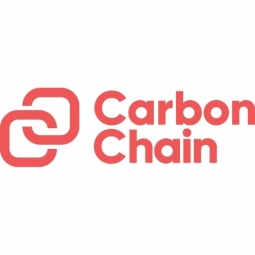
|
Mocoh's Transition to Lower Carbon Emissions with CarbonChain
Mocoh, a Geneva-based company supplying essential energy and resources across Africa, was facing a significant challenge in managing its greenhouse gas (GHG) emissions. In 2021, the company had little to no visibility of the carbon footprint or intensity of its oil and oil product trades. Mocoh wanted to lead the way in identifying sources of carbon emissions across its supply chain and publishing its findings. The company recognized the importance of transparent information and collaboration with all stakeholders in the complex energy transition. However, to do this, Mocoh needed to start measuring emissions from across its supply chain. The goals were to inform regulators with data-led information, understand the scale and structure of emissions in its products and transaction logistics, identify opportunities to reduce carbon intensity, and proactively and transparently share data with stakeholders.
|
|
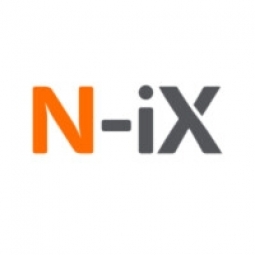
|
Revolutionizing Cancer Treatment: A Case Study on Cure Forward's Digital Platform
Cure Forward, an innovative healthcare platform, aimed to revolutionize the traditional approach to cancer treatment by building a network that connects patients with each other and with clinical trial providers. The challenge was to create a digital solution that would enable cancer patients to explore clinical trials as a treatment option. The platform also needed to provide access to educational information based on a user’s molecular diagnostic test results and facilitate communication between cancer patients and survivors. The client required a complex 5 in 1 web application with a simple and intuitive UX design, allowing patients to effortlessly add their details to the database. The design had to be engaging and encouraging, considering the social aspect of the product.
|
|

|
Modernizing Healthcare Software Solutions for Think Research
Think Research, a Canadian healthtech company, was faced with the challenge of modernizing the technological stack of its software products and developing new solutions to address complex healthcare challenges. The company's primary goal was to connect clinicians, facilities, and entire healthcare systems by providing them with software solutions and decision-making tools backed by cutting-edge technologies. The tasks at hand included extending development capabilities by setting up a dedicated development team, supporting all existing solutions while seamlessly migrating them to newer technologies, building a platform for referrals management, creating a virtual B2C platform for real-time appointment tracking, and ensuring the security and compliance of the products with healthcare regulations. The challenges also included analyzing the business logic, existing code, and product functionality for smooth migration to a newer version of Ruby on Rails framework, developing an efficient online care platform within a tight timeline, and integrating the platform with the partner’s healthcare system.
|
|

|
Travelport's Software Development Enhancement through Strategic Partnership
Travelport Locomote, a global travel technology company, was faced with the challenge of augmenting its in-house development capacity with cross-functional agile capable software delivery teams. The company aimed to enhance its existing travel platform to penetrate new markets and expand its engineering capabilities to speed up time-to-market. However, the company faced challenges in ensuring efficient knowledge transfer with other teams and setting up effective cooperation with various teams distributed globally across multiple time zones. Additionally, they needed to develop functionality that would ensure the success of their product in the new markets.
|
|
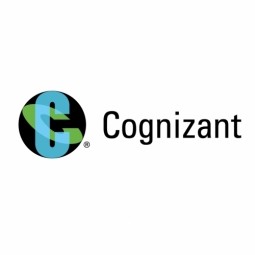
|
Digital Transformation Accelerates Time to Market and Boosts Revenue
A prominent US-based software company was grappling with bandwidth issues in resource allocation, managing various partners, and executing its product roadmap. The company's disjointed management approach led to the release of generic campaigns that lacked personalization. Balancing work priorities among different stakeholders resulted in increasing dependencies and delays. The company aimed to migrate to the cloud for scalability and improved data-driven decision-making capabilities. It also sought to reduce overall infrastructure costs, centralize disparate smaller teams, and deploy a third-party personalization and experimentation platform. To achieve these goals, the company partnered with Cognizant for a digital marketing transformation and the selection and deployment of a personalization platform.
|
|
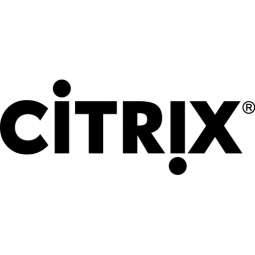
|
IGEL's Transition to Cloud-Based Workspaces with Citrix on Azure
IGEL Technology, a global provider of innovative and powerful thin client solutions, was looking to transition from a hardware manufacturer to a software provider. The company aimed to deliver complete solutions for software-defined endpoints, facilitating secure access to virtual and cloud-based working environments. IGEL's IT Manager, Tim-Oliver Felsen, believed that the future of IT workstations would be heavily reliant on cloud services due to their user-friendliness, flexibility, cost benefits, and efficient management. The company had previously relied on an external service provider that operated a Citrix infrastructure for most of its IT users. However, IGEL wanted to take the next step and transform its virtual workplaces into real Cloud Workspaces.
|
|
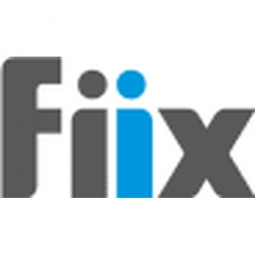
|
Anaren Microwave Implements their manufacturing CMMS
Like many organizations, Anaren had a homegrown work order application that had basic asset management functionality. “It was menu driven, so quite cumbersome,” explained Bill, “reporting was limited and it still relied heavily on paper transactions and records. We looked at our business needs going forward and decided this was one area that could be modernized.” On launching the Manufacturing CMMS project, Bill, the business analyst of the company identified three major areas for improvement:1. Improve efficiency by eliminating paper.2. Improve the control of preventive maintenance. 3. Improve inventory management.
|
|
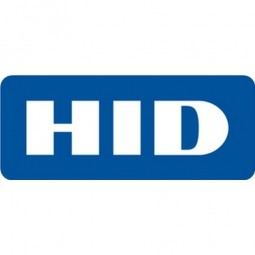
|
HID Global’s Passive RFID Sensor TAGs Revolutionize GE Hydro's Generator Installations
GE Hydro, a subsidiary of GE Renewable Energy, provides solutions for hydropower installations, including machinery and equipment sensor integration, testing, measurements, and data interpretation. However, they faced a significant challenge in monitoring the conditions of their installations. Hydropower installations are located in severe environments, often with aging connections between the rotor poles that exhibit drastic temperature rises and cause unplanned failures in production. Traditional solutions like batteries, direct wired connections, infrared devices, and fiber-based temperature sensors were ineffective due to the harsh conditions, high radial accelerations, and the proximity of metal parts. Furthermore, the high speed of transit in front of the antenna, which can go up to 250 km per hour, posed additional challenges. Monitoring, collecting, and managing reliable data with a small RFID TAG was a major technical challenge due to the high currents and related electromagnetic fields inside the enclosure where the RFID chip in the generator is located.
|
|

|
Transforming Data Reporting: Profusion's Journey with Sisense
Profusion, a data science and marketing services company, was grappling with the challenge of slow and reactive reporting for its clients. The company wanted to transition its clients from relying on manual, Excel-based reporting to a more proactive, real-time optimization. A specific challenge was presented by a London creative agency, which required Profusion to develop a solution for reporting ticketing data to its client, an international live show production company. The agency had two requirements: an intuitive interface to communicate financial investment and return through different marketing channels, and the ability to query a single customer view of its customer and extract this data for use within its other business tools. The existing process was labor-intensive, with information only available sporadically or on the client’s request.
|
|

|
Seamless Platform Modernisation for Operational Excellence in Electronic Instruments
The customer, a US-based market leader in delivering innovative electronic instruments and electromechanical device solutions, faced a significant challenge with their instrumentation product line. The gateway managing this line was built using Printed Circuit Boards (PCB), which had become obsolete in the market. This outdated technology was limiting the company's ability to enhance their gateway solution and add extensive software functionalities. The customer needed to upgrade the hardware environment to increase its business value and market appeal. The challenge was to breathe new life into their gateway solution, modernise the application codebase, and reduce the Bills of Material (BOM) cost and form factor.
|
|

|
Mondelēz International's Innovation Transformation with Sopheon's IoT Solution
Mondelēz International, a global food and beverage leader, faced significant challenges during the COVID-19 pandemic. The company had to accelerate its consumer-centric growth strategy amidst the global disruption. A significant part of this strategy involved replacing outdated, disconnected systems and tools for innovation process management. Mondelēz needed a single solution for managing its innovation portfolio, resources, demand planning, and project execution. The company was also faced with the challenge of delivering products to market that exceed consumer expectations faster and more profitably. The existing disconnected legacy systems were hampering timely insights, decision-making, and resource allocation. There was a lack of transparency to the innovation portfolio which slowed project management and complicated governance. Outdated and fragmented analytics created a lack of innovation project visibility across global teams.
|
|
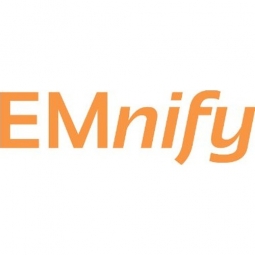
|
Ryde Technology: Enhancing E-Scooter Sharing Service with IoT
Ryde Technology, a leading e-scooter-sharing provider in Norway, was facing challenges in ensuring a seamless and efficient service for its users. The company, which operates over 20,000 devices across six major Norwegian cities, needed a reliable solution to enable users to find a nearby vehicle and initiate a ride quickly and seamlessly. The company was also grappling with issues of scooter vandalism and SIM card misuse, which were adding to the company's operational costs. Furthermore, Ryde was looking to improve its production and supply chain processes, particularly in terms of quality assurance and rigorous testing of their scooters right from production. The company's previous provider was unable to meet these needs, leading to short outages where their devices were completely shut off from the network.
|
|

